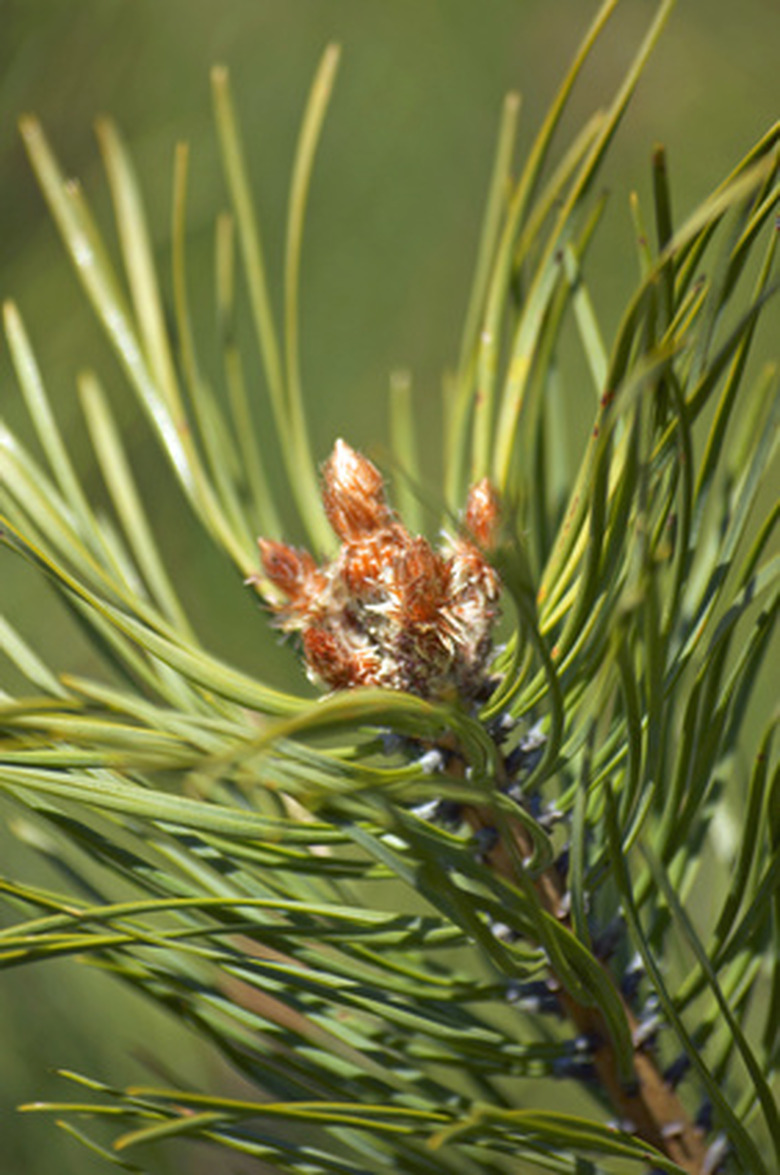What Is Killing My Pine Trees?
Pines are common landscaping trees, prized for their evergreen needles and hardiness against most diseases. However, even pines are susceptible to some problems. They can develop insect infestations or fungal diseases and suffer from inappropriate growing conditions. Knowing the most common pine tree ailments can help you find out what is weakening your landscape trees and correct the problem.
Natural Needle Drop
Sometimes pine tree needles turn brown or yellow all over the tree, then fall off. For first-time pine owners, this can be alarming. It may look like your tree is dying. When this happens in autumn, it's usually the result of a natural process. Pine trees may be evergreen, but even they need to shed their needles sometimes. Wait a few weeks and your pine tree should look lively again.
- Pines are common landscaping trees, prized for their evergreen needles and hardiness against most diseases.
- Knowing the most common pine tree ailments can help you find out what is weakening your landscape trees and correct the problem.
Cold Damage
Most pine trees are relatively hardy against cold, but a sudden freeze can damage their needles, making them look dead. If your pine tree has brown-flecked needles, followed by significant dieback, it may have gotten too cold. According to Tulsa Master Gardeners, this problem usually occurs only in new needles or on the southern side of the tree. It's most common in younger pines. Prune away dead growth to allow the tree to recover.
Sphaeropsis Tip Blight
Also called diplodia tip blight, this fungal disease kills the most recent growth in Austrian, Scotch and red pines and may result in dying branches, twigs and needles all over the tree. Damage often appears in an irregular pattern. Eventually, black fungal growth shows up in dead needles and pine cones. The worst symptoms appear in spring and fall. Treat this problem with strategic pruning and fungicides.
- Most pine trees are relatively hardy against cold, but a sudden freeze can damage their needles, making them look dead.
- Also called diplodia tip blight, this fungal disease kills the most recent growth in Austrian, Scotch and red pines and may result in dying branches, twigs and needles all over the tree.
Annosus Root and Butt Rot
This fungal condition causes thin needles in the crown of the tree, which may die and turn red. It affects most types of pine trees and produces fruiting bodies near the base of the tree. Trees may die while still standing or blow over in strong storms. Annosus rot enters the tree through pruning wounds. Treat your trees with borax after cutting and avoid planting pines within 20 feet of an infected tree, even after removal.
Boring Beetles
Wood and bark boring beetles cause circular holes in the trunk or branches of a pine. These holes are random, rather than in straight lines. Over time, boring beetles weaken a tree, causing reduced growth and susceptibility to disease. Most likely to be a problem in mature trees, these insects are hard to remove. Use pesticides labeled for use against boring beetles or remove the tree and burn it.
- This fungal condition causes thin needles in the crown of the tree, which may die and turn red.
- Over time, boring beetles weaken a tree, causing reduced growth and susceptibility to disease.
Fusiform Rust
This fungal condition causes swollen galls on the branches or trunk of a pine tree. In spring, the galls turn orange and are covered in powdery spores. Fusiform rust affects loblolly and slash pines most and can kill young trees. When galls occur on the main trunk of very small pines, removal is the only option. Prune off galls on branches to keep them from reaching the trunk.
